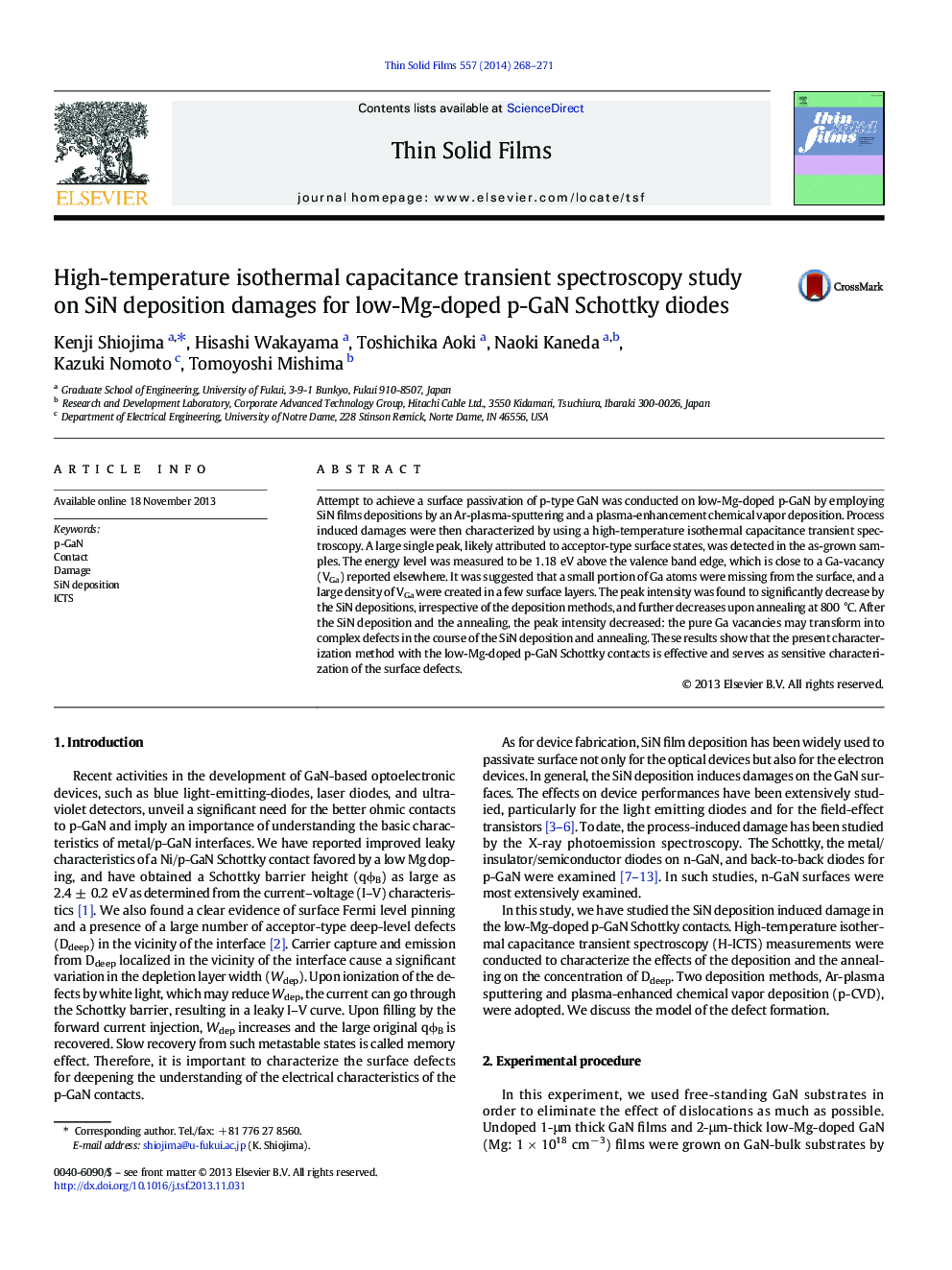| Article ID | Journal | Published Year | Pages | File Type |
|---|---|---|---|---|
| 8035193 | Thin Solid Films | 2014 | 4 Pages |
Abstract
Attempt to achieve a surface passivation of p-type GaN was conducted on low-Mg-doped p-GaN by employing SiN films depositions by an Ar-plasma-sputtering and a plasma-enhancement chemical vapor deposition. Process induced damages were then characterized by using a high-temperature isothermal capacitance transient spectroscopy. A large single peak, likely attributed to acceptor-type surface states, was detected in the as-grown samples. The energy level was measured to be 1.18 eV above the valence band edge, which is close to a Ga-vacancy (VGa) reported elsewhere. It was suggested that a small portion of Ga atoms were missing from the surface, and a large density of VGa were created in a few surface layers. The peak intensity was found to significantly decrease by the SiN depositions, irrespective of the deposition methods, and further decreases upon annealing at 800 °C. After the SiN deposition and the annealing, the peak intensity decreased: the pure Ga vacancies may transform into complex defects in the course of the SiN deposition and annealing. These results show that the present characterization method with the low-Mg-doped p-GaN Schottky contacts is effective and serves as sensitive characterization of the surface defects.
Related Topics
Physical Sciences and Engineering
Materials Science
Nanotechnology
Authors
Kenji Shiojima, Hisashi Wakayama, Toshichika Aoki, Naoki Kaneda, Kazuki Nomoto, Tomoyoshi Mishima,
